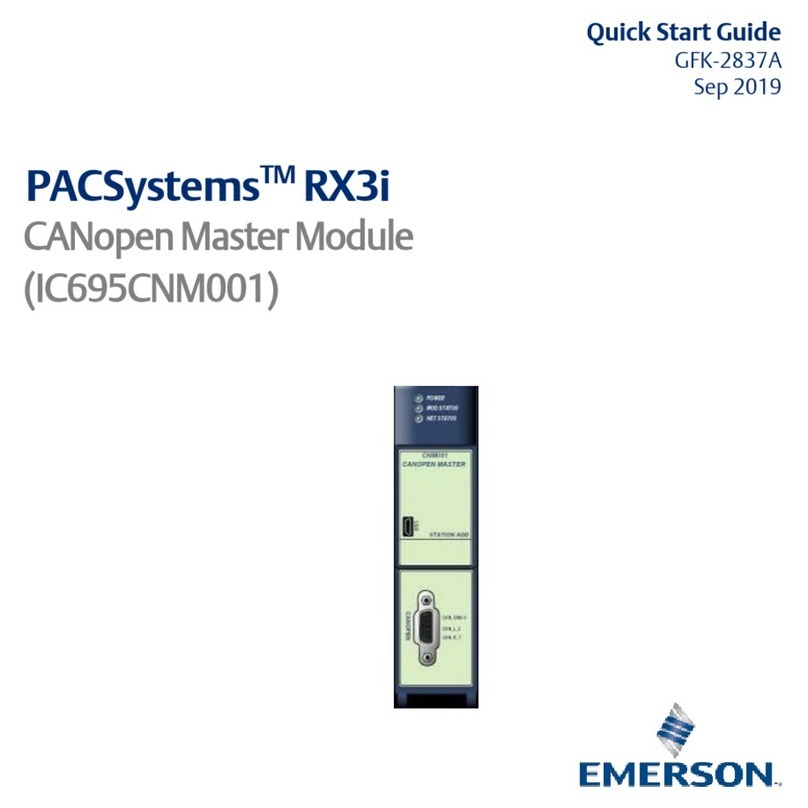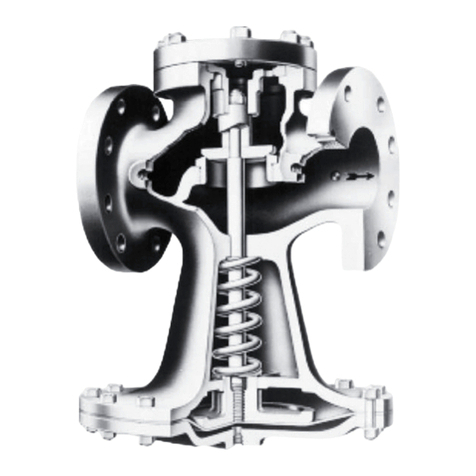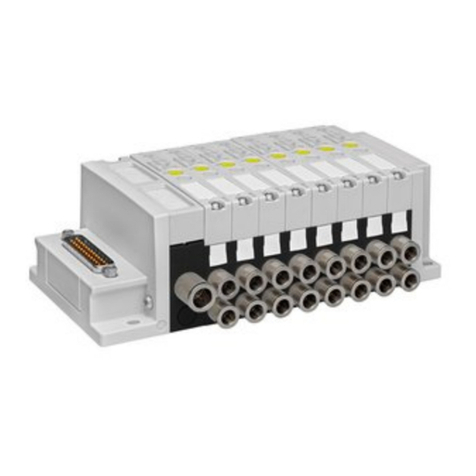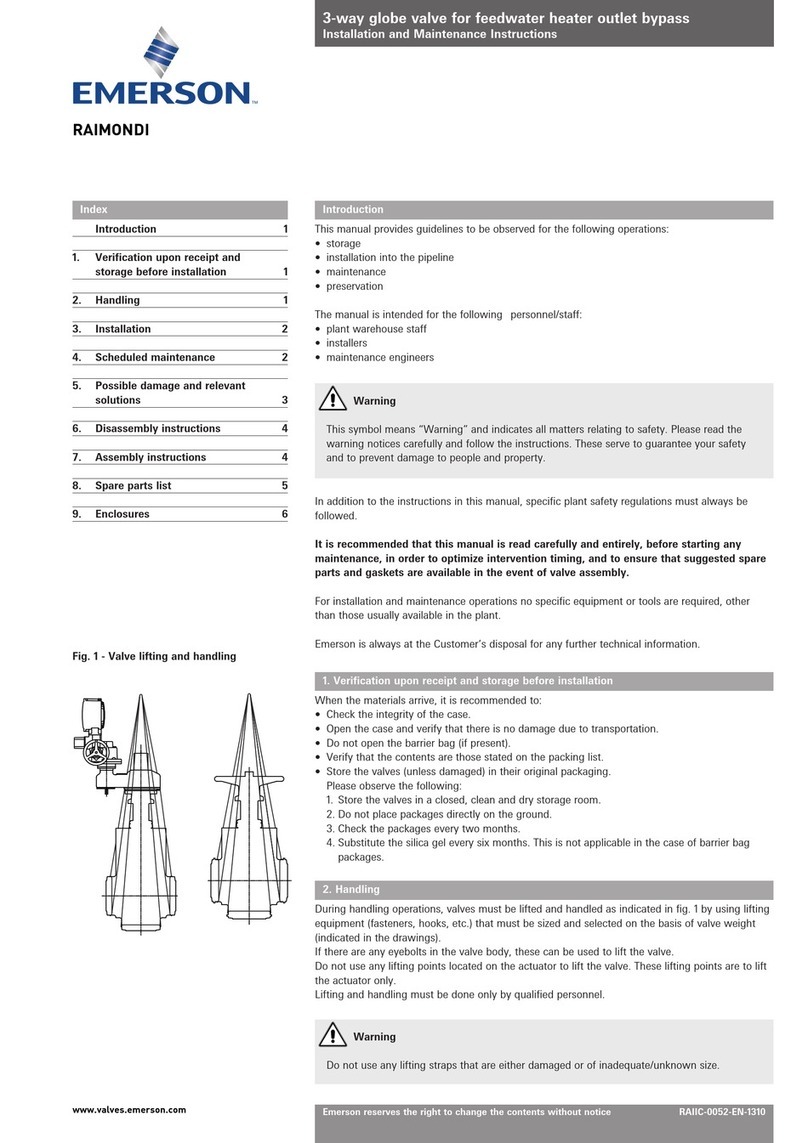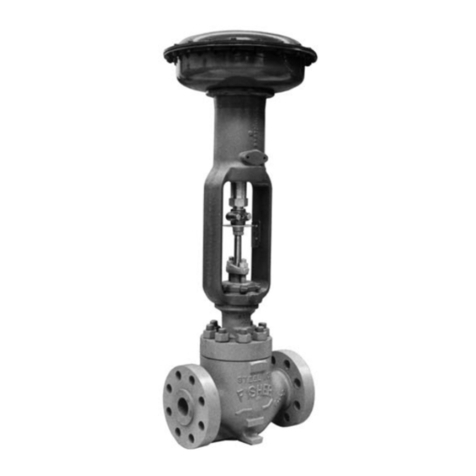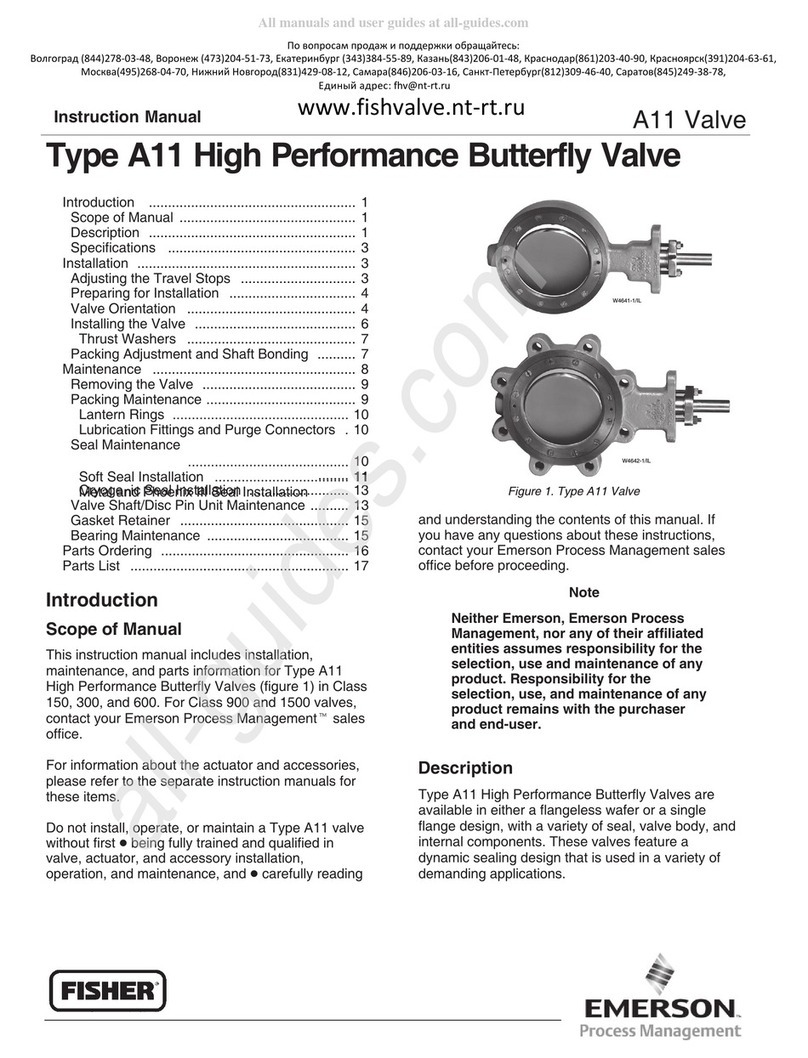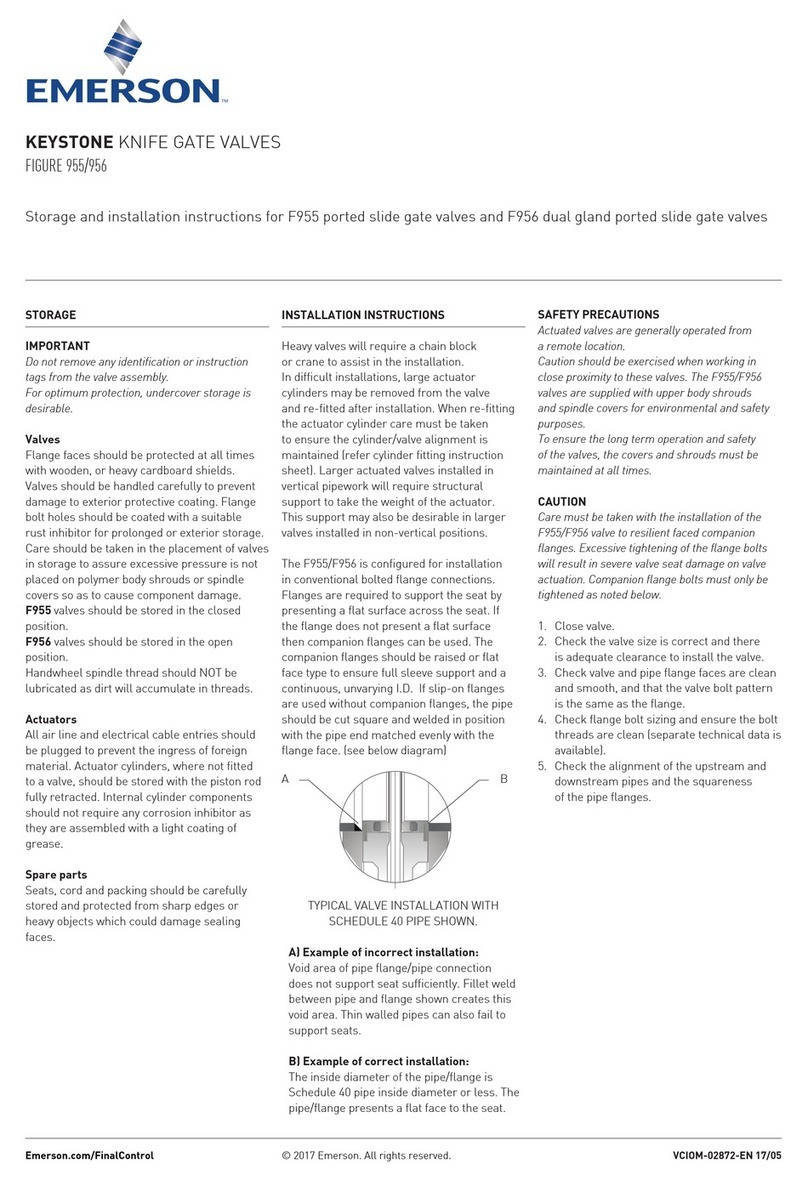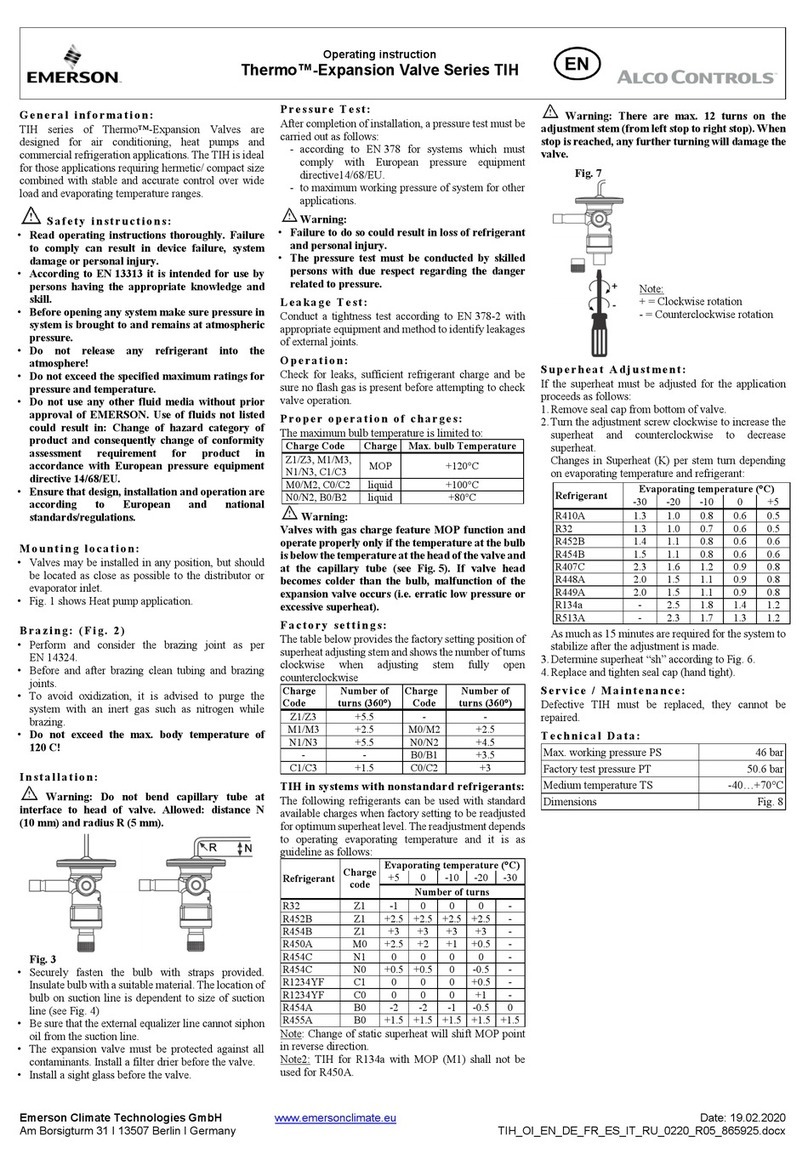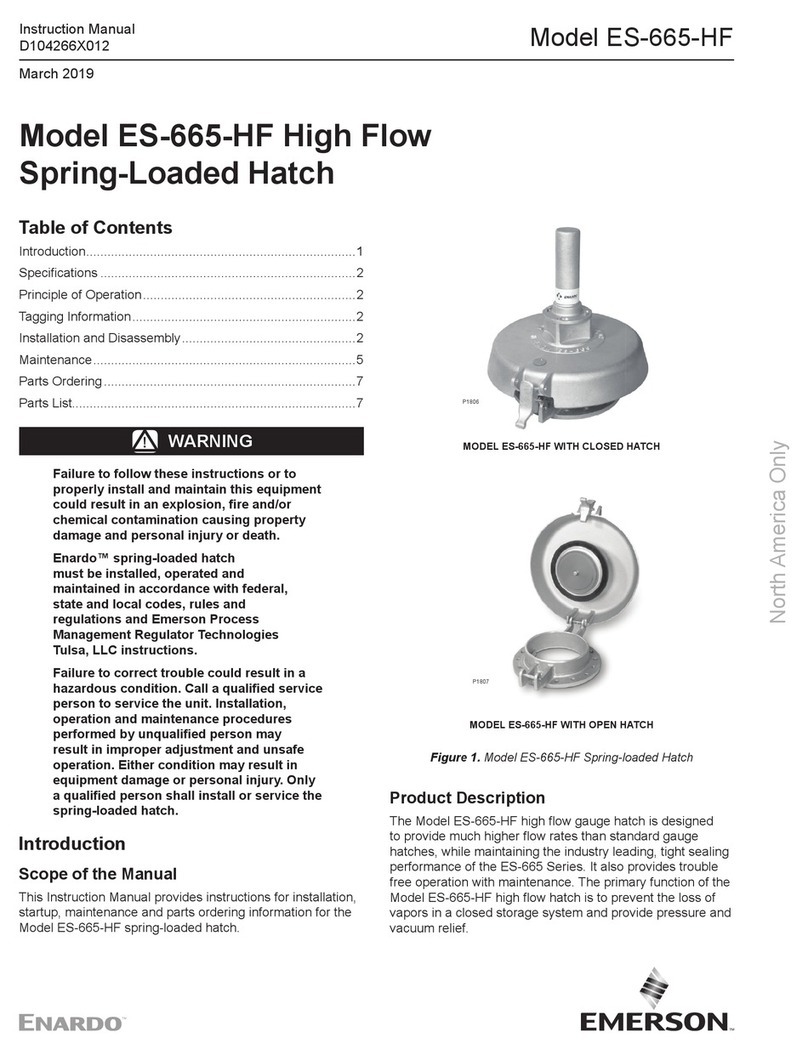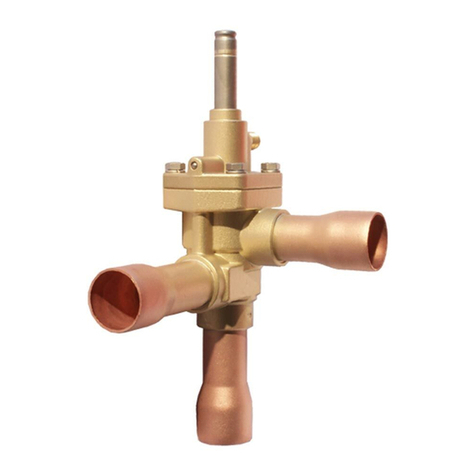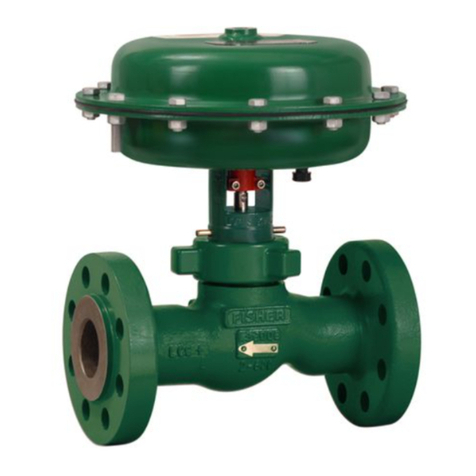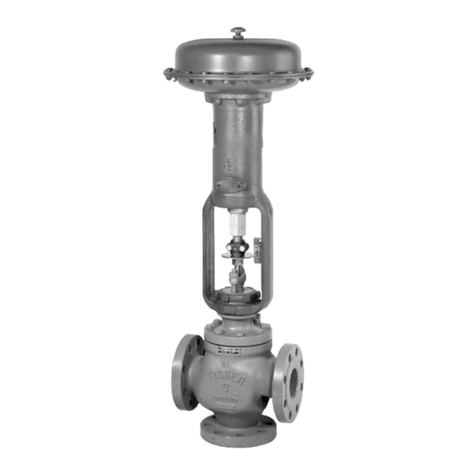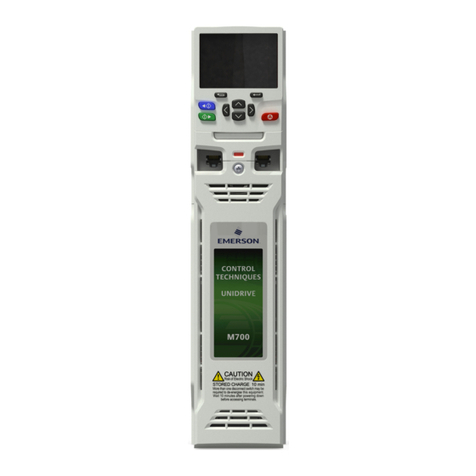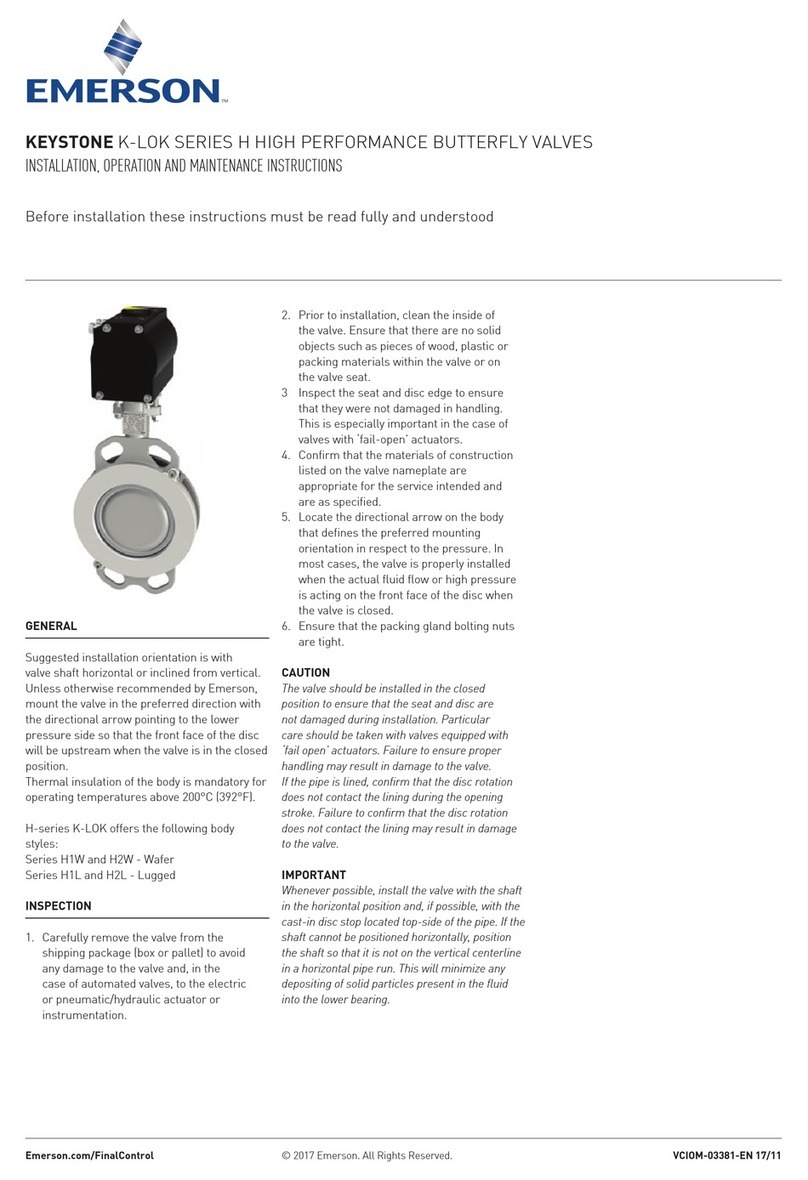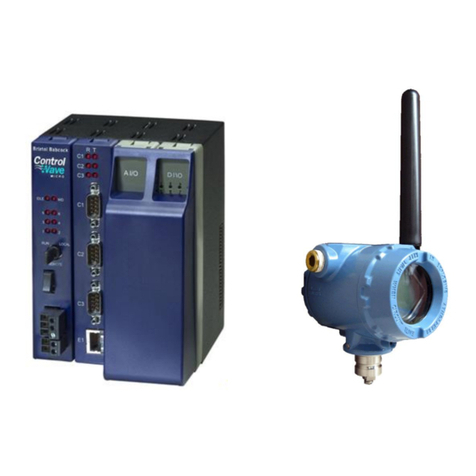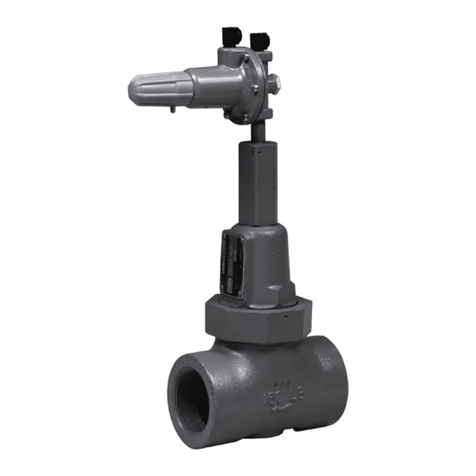
D4 Valve
Instruction Manual
Form 5755
September 2005
9
CAUTION
Over-tightening the diaphragm casing
cap screws and nuts (keys 45 and 46)
can damage the diaphragm. Do not
exceed 27 NSm (20 lbfSft) torque.
5. Replace the spring (key 30) on the diaphragm
plate (key 40). Replace the upper spring seat
(key 29). Position the upper casing (key 23) on the
lower casing (key 39). Insert the cap screws (key 45)
and tighten the hex nuts (key 46). Torque the casing
cap screws evenly to 27 NSm (20 lbfSft) using a
crisscross pattern.
6. Adjust the initial spring set per the Spring
Adjustment section in this manual.
Actuator (Spring-to-Open)
WARNING
Observe the warning at the start of the
Maintenance section.
Refer to figure 4.
Before disassembling the actuator, disassemble the
valve plug, seat ring, and packing according to
instructions in this manual.
Disassembly
1. Unscrew the spring case assembly (key 27). Turn
the adjusting screw nut (key 44) counterclockwise to
remove all spring compression. Remove the
adjusting screw nut, upper spring seat, and spring
(keys 44, 29, and 30)
2. Unscrew the casing cap screws and hex nuts
(keys 45 and 46), and remove the upper casing
assembly (key 23) from the lower casing (key 39).
Remove the cotter pin (key 36) and unscrew the
adjusting stem (key 31).
3. Lift out the diaphragm (key 15), diaphragm plate
(key 40), and stem assembly. Remove the travel
indicator (key 32) when the bottom of the stem
enters the yoke window.
4. To replace the diaphragm (key 15), separate the
diaphragm assembly by using a wrench on the hex
nuts (key 42) to unscrew the assembly.
5. Separate the parts—diaphragm washer, actuator
O-ring (keys 41 and 25), diaphragm, and diaphragm
plate, (keys 15 and 40).
6. Inspect the diaphragm and the actuator O-ring for
damage or deterioration, and replace if necessary. If
the diaphragm is replaced, a new O-ring should also
be installed.
7. Inspect the stem O-ring (key 19) and bonnet
bushing (key 20); replace if necessary. To inspect
the casing O-ring (key 18), remove the cap screws
(key 38) and lift off the lower casing (key 39).
Replace the O-ring if necessary. Inspect the
adjusting stem bushing (key 26) and actuator stem
O-ring (key 53). Replace if necessary.
8. If the hammer nut needs to be removed from the
bonnet, the spring pins (key 7) can be removed with
locking pliers.
Assembly
1. Before starting assembly, make sure all parts are
clean and in good condition. There should be no
burrs or sharp edges on any threads or surfaces that
might cut or damage an O-ring, bushing, the
packing, or the diaphragm. When replacing O-rings
and bushings, be sure the O-ring or bushing groove
is clean and undamaged. Using a general purpose
lubricant (key 49), lubricate all bushings and O-rings
and the threads of parts that have to pass through
the bushings and O-rings.
CAUTION
The threads on factory-produced valve
stems have been specially machined
to avoid O-ring, bushing, or packing
damage during trim maintenance. Use
of other than a factory-produced valve
stem may result in early stem O-ring,
bushing, and packing failure.
Note
Do not lubricate cap screws (key 38)
before inserting them in the following
procedure.
2. Place the hammer nut and spring pins on the
bonnet, if removed. Install the casing O-ring
(key 18), the stem O-ring (key 19), and the bonnet
bushing (key 20). Position the lower casing (key 39)
on the bonnet. Insert the nonlubricated cap screws
(key 38), and torque to 49 NSm (36 lbfSft).
3. Assemble the diaphragm plate assembly. Place
the patterned side of the diaphragm (key 15) against
the diaphragm plate (key 40). Be sure to turn the
diaphragm washer (key 41) so that the side that is
beveled on the inside diameter is against the O-ring

